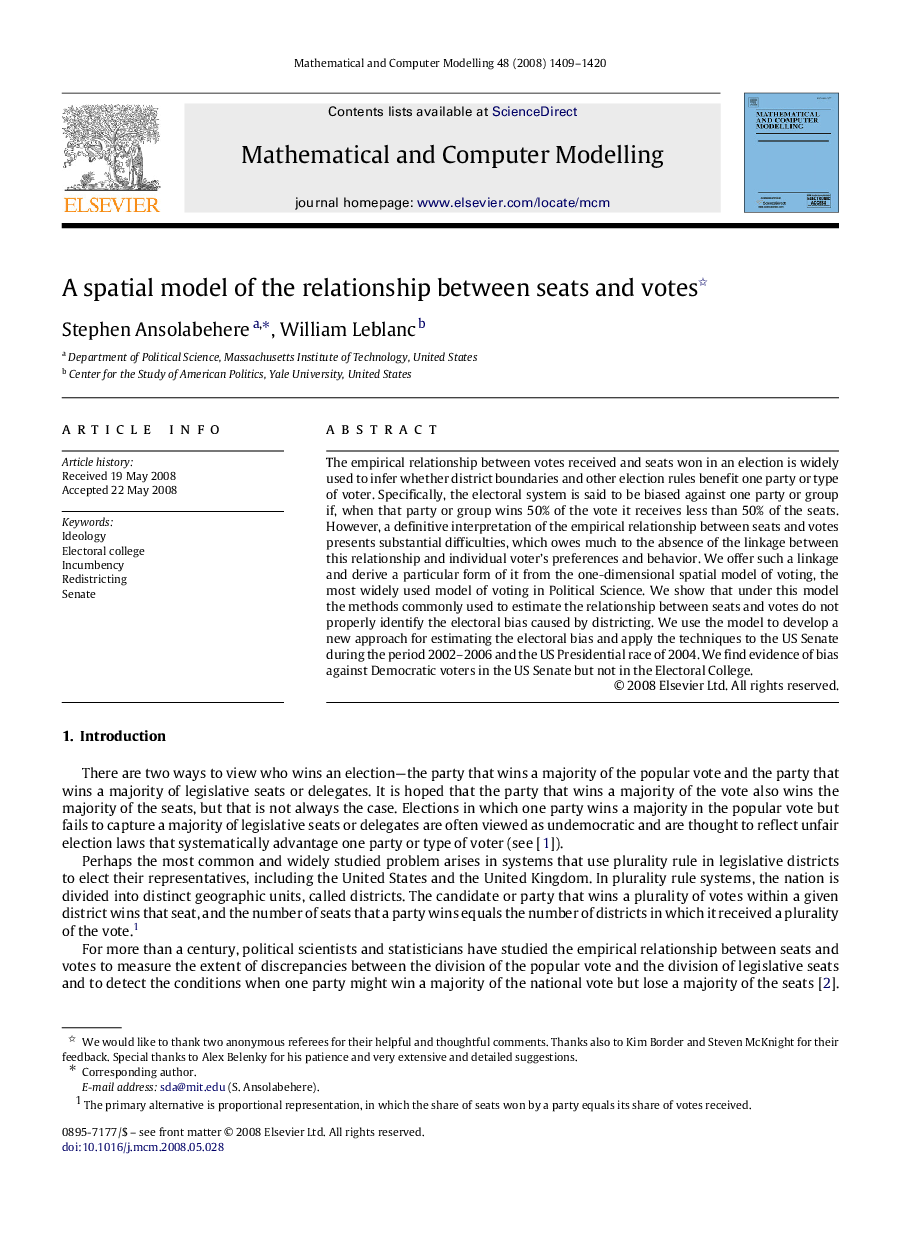| کد مقاله | کد نشریه | سال انتشار | مقاله انگلیسی | نسخه تمام متن |
|---|---|---|---|---|
| 1137619 | 1489188 | 2008 | 12 صفحه PDF | دانلود رایگان |

The empirical relationship between votes received and seats won in an election is widely used to infer whether district boundaries and other election rules benefit one party or type of voter. Specifically, the electoral system is said to be biased against one party or group if, when that party or group wins 50% of the vote it receives less than 50% of the seats. However, a definitive interpretation of the empirical relationship between seats and votes presents substantial difficulties, which owes much to the absence of the linkage between this relationship and individual voter’s preferences and behavior. We offer such a linkage and derive a particular form of it from the one-dimensional spatial model of voting, the most widely used model of voting in Political Science. We show that under this model the methods commonly used to estimate the relationship between seats and votes do not properly identify the electoral bias caused by districting. We use the model to develop a new approach for estimating the electoral bias and apply the techniques to the US Senate during the period 2002–2006 and the US Presidential race of 2004. We find evidence of bias against Democratic voters in the US Senate but not in the Electoral College.
Journal: Mathematical and Computer Modelling - Volume 48, Issues 9–10, November 2008, Pages 1409–1420